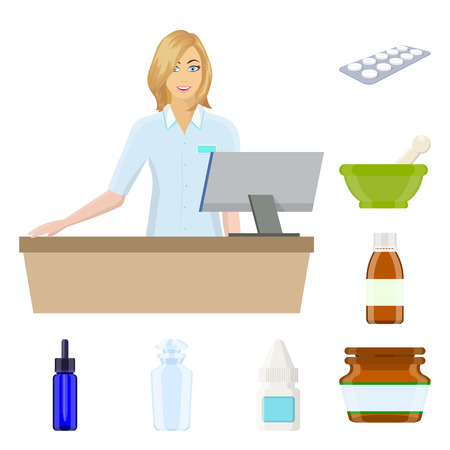1. Introduction to Skin Tightening in the UK
In recent years, skin tightening has become one of the most sought-after beauty enhancements across the UK. Whether strolling through the bustling streets of London or catching up with friends in a cosy Manchester café, it’s hard not to notice the growing emphasis on fresh, firm, and youthful-looking skin. This trend is deeply intertwined with local beauty ideals—where a healthy, radiant complexion often takes centre stage over heavy makeup or dramatic cosmetic procedures. British beauty standards tend to celebrate natural elegance and subtle refinement, making non-invasive treatments particularly appealing. With increased exposure to global skincare trends and the influence of social media, more Britons are exploring both at-home solutions and professional treatments to achieve that coveted firmness and glow. As the desire for practical, accessible self-care grows, the conversation around skin tightening continues to evolve—bridging traditional clinic visits with innovative home-use devices tailored for the UK lifestyle.
Understanding Home-Use Skin Tightening Devices
With the surge in demand for youthful, firmer skin, the UK market has seen a remarkable influx of home-use skin tightening devices. These gadgets offer a convenient and often more budget-friendly alternative to professional clinic treatments. But how do they work, are they safe, and which brands do savvy British consumers trust?
How At-Home Devices Work
Most home-use skin tightening devices utilise technologies such as radiofrequency (RF), microcurrent, LED light therapy, or ultrasound. The basic principle is to stimulate collagen production within the deeper layers of the skin without invasive procedures. For example, RF devices gently heat the dermis to boost collagen synthesis, while microcurrent gadgets use low-level electrical currents to tone facial muscles and improve skin elasticity.
Safety Considerations for UK Users
Safety is paramount when using any device at home. UK consumers should always check for CE certification—a mark indicating conformity with health, safety, and environmental protection standards in Europe. It’s also wise to review manufacturer guidelines, patch-test where advised, and avoid overuse, which can lead to irritation or damage. Some devices are not recommended for certain skin types or conditions, so consulting with a dermatologist before starting is always best practice.
Popular Brands in the UK Market
Several brands have gained popularity among British users for their reliability and effectiveness. Here’s a quick comparison:
| Brand | Technology | Main Features | UK Availability |
|---|---|---|---|
| NuFACE | Microcurrent | Tones facial muscles; portable design; app integration | Widely available (John Lewis, Boots) |
| Silk’n FaceTite | RF + LED + IR Heat | Multi-technology synergy; visible results after 5 weeks | Available online and in select high street shops |
| TriPollar STOP Vx | Radiofrequency (RF) | Tightens skin; reduces wrinkles; compact style | E-retailers like LookFantastic, Harrods Beauty Hall |
| Foreo Bear | Microcurrent + T-Sonic Pulsations | Sleek Scandinavian design; app-controlled routines | Mainstream UK retailers (Selfridges, Cult Beauty) |
Choosing Wisely: The British Approach
British consumers typically value transparency and evidence-based claims. Trusted brands tend to provide clinical trial data and user testimonials tailored to UK concerns—like combating dullness from unpredictable weather or addressing fine lines due to central heating in winter months.

3. Professional Skin Tightening Treatments
When it comes to achieving noticeable and long-lasting results, professional skin tightening treatments offered in UK clinics are a popular choice for many. These in-clinic procedures include radiofrequency (RF) therapy, ultrasound-based treatments like Ultherapy, and advanced laser techniques such as fractional laser resurfacing. Unlike home-use devices, these treatments utilise medical-grade technology and are performed under the supervision of highly trained practitioners.
Stepping into a reputable clinic, you can expect a thorough consultation where your skin concerns, health history, and desired outcomes are discussed in detail. This personalised approach allows the practitioner to recommend the most suitable treatment plan tailored to your unique needs. Sessions typically last between 30 minutes to an hour, depending on the area being treated. During the procedure, some warmth or tingling may be experienced, but discomfort is usually minimal and temporary.
The expertise of your practitioner plays a crucial role in ensuring both safety and optimal results. In the UK, it’s essential to choose clinics that are registered with the Care Quality Commission (CQC). This independent regulator monitors health and social care services to ensure they meet high standards of safety, effectiveness, and patient care. A CQC-registered clinic signifies that practitioners are qualified, equipment is well-maintained, and all protocols adhere strictly to UK regulations—giving you peace of mind during your aesthetic journey.
4. Comparing Effectiveness and Results
When it comes to skin tightening, the UK market offers a range of home-use devices as well as professional clinic-based treatments. But how do their results truly stack up against each other? Let’s have a candid look, drawing upon clinical studies conducted in Britain and honest feedback from users across the country.
What Can You Realistically Expect?
Most home-use skin tightening devices use lower-energy radiofrequency (RF), ultrasound, or LED technology. In contrast, clinics employ more powerful versions of these technologies, often combined with expert assessment and bespoke treatment plans. While at-home gadgets are enticing for their convenience and price, it’s important to set realistic expectations.
| Treatment Type | Typical Results (as reported in UK studies) | Timeframe for Visible Improvement | User Experience |
|---|---|---|---|
| Home-Use Devices | Mild to moderate improvement in skin firmness; best suited for early signs of ageing or maintenance between clinic visits | 4-12 weeks with consistent use (2-3 times weekly) | Convenient but requires discipline; most users report subtle improvements rather than dramatic changes |
| Professional Treatments (e.g., clinic RF or HIFU) | Noticeable tightening and lifting, especially on jawline and cheeks; suitable for moderate to advanced laxity | 1-2 sessions for initial results; optimal effects visible after 2-3 months | More expensive but delivers pronounced, longer-lasting results; downtime is minimal but may involve mild redness or swelling |
The Clinical Evidence from the UK Perspective
A recent study published by the British Association of Dermatologists found that while both approaches can stimulate collagen production, professional-grade devices outperformed their home-use counterparts in terms of depth of penetration and duration of results. For many British women and men, clinics are seen as an investment in both efficacy and peace of mind—especially when targeting sagging skin around the neck or deeper facial lines.
User Stories: Real Voices from Across the UK
Susan from Surrey shared that her at-home device helped “perk up” her skin before a wedding, but she still books a professional HIFU session yearly for “proper contouring.” Meanwhile, Mark in Manchester notes that his clinic sessions gave him confidence at work events, describing the results as “subtle but game-changing.” These experiences echo what many Britons discover: home devices provide gentle maintenance, while clinics deliver transformative effects.
The Bottom Line: Choose What Fits Your Needs—and Your Lifestyle
If you’re hoping for major changes or want to tackle more significant laxity, professional treatments in reputable UK clinics are likely your best bet. If you’re after subtle upkeep or looking to extend the effects of previous treatments, modern home-use devices can be a handy addition to your skincare routine. Ultimately, understanding what each option can—and cannot—achieve is key to feeling satisfied with your choice.
5. Cost, Convenience, and Commitment
When weighing up home-use skin tightening devices against professional treatments in the UK, three factors tend to stand out: cost, convenience, and the level of commitment required. Let’s dive into each aspect for a balanced perspective that matches the realities of British life.
Upfront and Ongoing Costs
Home-use devices are often seen as an investment—there’s a noticeable upfront expense, but once purchased, most require only minimal additional costs such as replacement treatment heads or gels. Prices can range from around £150 to £500, making them relatively accessible for many. In contrast, professional treatments like radiofrequency or ultrasound at reputable clinics may cost anywhere from £200 to £600 per session, with multiple sessions needed for optimal results. Over time, these costs quickly add up, so budget-conscious individuals might find home devices more appealing, especially if they’re keen on maintenance rather than dramatic transformation.
The Convenience Factor
One of the main draws of home-use devices is sheer convenience. There’s no need to book appointments weeks in advance or arrange travel across town; you can simply pop on your favourite playlist and treat your skin whenever it suits you—whether that’s during a quiet Sunday morning or after work. On the flip side, clinic visits mean relying on specialist expertise and often accessing cutting-edge technology unavailable for home use. However, it does require carving out time from your schedule and possibly facing waiting lists at popular UK clinics.
Commitment: How Much Are You Willing to Invest?
Both options demand a certain level of commitment—but in different ways. Home devices typically call for regular use over several weeks or months before visible changes appear; consistency is key for lasting effects. It can be easy to lose motivation or forget sessions amid daily life (especially with the famously busy British lifestyle). Professional treatments usually involve fewer sessions but may require annual top-ups or maintenance appointments. There’s also a psychological element: some find that the structure of scheduled clinic visits helps them stay on track.
In summary, choosing between home-use skin tightening gadgets and professional treatments hinges not just on your budget but also your lifestyle preferences and willingness to commit time and effort. Whether you value at-home flexibility or the reassurance of expert care, being honest about what fits into your routine is crucial for achieving satisfying results.
6. British Perspectives: Personal Experiences and Beauty Culture
When it comes to skin tightening, the British approach is uniquely shaped by our cultures blend of understated elegance and practicality. Many people I’ve spoken with across the UK emphasise a preference for subtle improvements rather than dramatic transformations—something that echoes in both their testimonials and my own journey. For example, a close friend from Manchester shared her experience with a popular home-use device, praising the convenience and privacy it offered, especially during lockdowns when clinics were inaccessible. She loved how it fit seamlessly into her evening routine, allowing her to enjoy a cup of tea while treating her skin. On the other hand, my aunt in London swears by professional treatments, highlighting the expertise and reassurance that come with seeing a trained specialist. She values the trust built over years with her aesthetician, who understands not just her skin but also her comfort levels with different procedures.
British beauty culture often leans towards a “less is more” philosophy, favouring natural-looking results over anything too obvious. There’s a certain pride in ageing gracefully, and many people here see home-use devices as tools for gentle maintenance rather than drastic change. I personally found using an at-home radiofrequency device gave my skin a lovely boost—my jawline felt firmer and I enjoyed having control over my routine. Yet, I noticed that when I wanted more visible results before big events (like weddings or reunions), nothing quite matched the confidence boost of a professional session at my local clinic.
This balance between self-care at home and seeking expert help when needed seems to reflect broader British attitudes towards wellbeing—pragmatic yet quietly aspirational. We love products that fit into our daily lives without too much fuss, but we’re also willing to invest in professional care for special occasions or when we feel it’s truly necessary. Ultimately, whether choosing a high-tech gadget or booking a clinical appointment, most Brits are guided by personal comfort, trusted recommendations, and an appreciation for subtlety over spectacle.
7. Making the Right Choice for You
Deciding between home-use skin tightening devices and professional treatments in the UK can feel a bit overwhelming, especially with so many options available. Ultimately, the right choice hinges on your personal goals, daily routine, and even some uniquely British considerations. If you’re looking for subtle, gradual improvement that fits seamlessly into a busy schedule—perhaps juggling work, family life, and the unpredictable UK weather—at-home gadgets might be an excellent starting point. These devices allow you to treat yourself at your own pace, often while catching up on your favourite series or winding down after a long day.
On the other hand, if you seek more dramatic results or have specific skin concerns (such as significant laxity or deeper wrinkles), consulting a qualified UK-based aesthetic practitioner is wise. Clinics across Britain are known for their rigorous standards and access to cutting-edge technology, offering peace of mind alongside professional-grade outcomes. Don’t forget to research CQC-registered clinics and practitioners who are members of respected bodies like the BACN or GMC—a hallmark of quality in UK aesthetics.
Your lifestyle also plays a significant role. If frequent travel or a packed diary makes regular clinic visits tricky, portable home devices offer unmatched flexibility. Conversely, if you relish the idea of being pampered in a luxurious setting and appreciate expert guidance every step of the way, professional treatments deliver an experience as well as results.
In my own journey living in London, I found value in combining both approaches: using home gadgets for maintenance and booking in-clinic sessions before special occasions. It’s worth having an honest think about what fits your life best—not just what’s trending on social media. And remember, no matter which path you choose, consistency is key for lasting results.
Ultimately, listen to your needs and trust your instincts. Seek recommendations from friends or local beauty communities; Britons are famously candid when sharing their experiences. Whether you opt for a high-tech gadget from Boots or treat yourself at a Harley Street clinic, make sure it aligns with your expectations and feels right for you. After all, achieving radiant skin should be a joy rather than a chore.


